Reportings in MOXIS
Content
MOXIS offers the option of creating evaluations from its data. This article provides you with more information about the MOXIS reporting options.
1. Prerequisite
Under the Reporting-tab (see figure 1 [1]) in the administration interface, MOXIS offers four options (see figure 1 [2]) to evaluate the information processed so far:
Signature Transaction Reports
The report contains the aggregated data of the signature transaction (users, process, provider) for the selected period.
Signature Transactions
The evaluation contains the raw data of the signature transaction for the selected period.
Concurrent Users
The evaluation contains all currently logged-in users.
Active users
The evaluation contains the data of all users who are active or are actively synchronized from the identity provider to MOXIS.
The desired filters can be limited in time using date fields (see figure 1 [3]).
Click the [Export]-button (see figure 1 [4]) to export the desired evaluation.
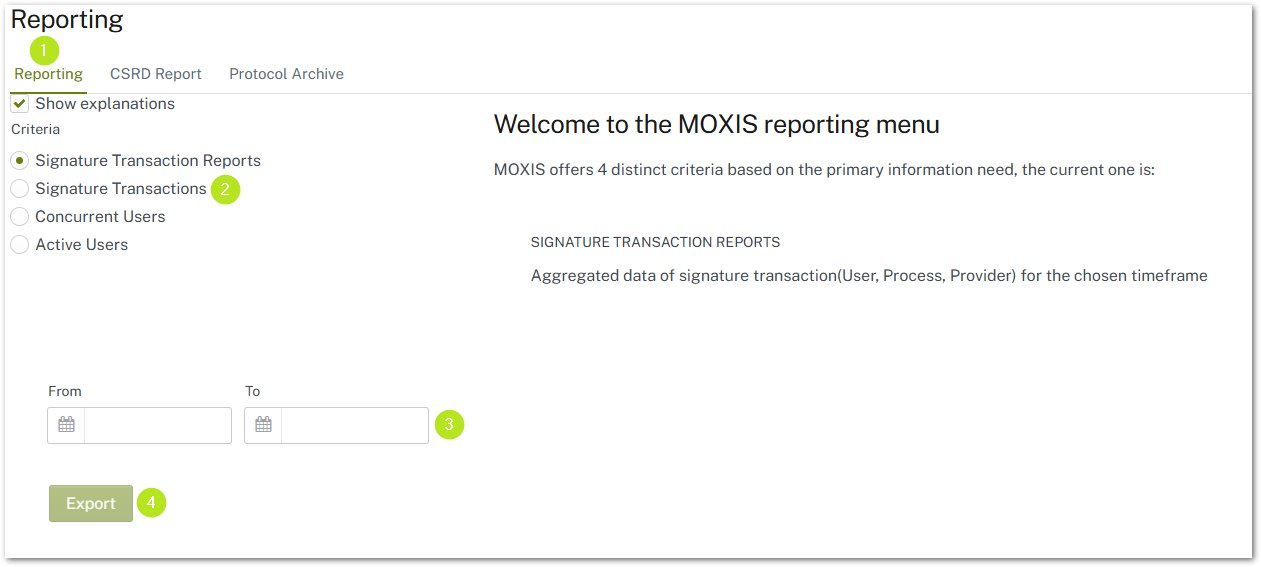
Figure 1: Reporting-tab in MOXIS
XiTip
MOXIS offers integrated templates for reports. You can download these in the various tabs by clicking on the [Templates]-button (see figure 3 [1]). You can find the corresponding instructions to the templates by clicking on the [Instructions]-button (see figure 3 [2]).
2. Examples of evaluations
The following examples show one evaluation for each of the four evaluation options. Please note: MOXIS provides data for evaluations in the form of raw data in a .csv file (comma separated values).
As an example of how this raw data can be used, report templates are provided, which we illustrate in this article.
Please note: The use of the examples may require the use of various licenses (e.g., Microsoft Office licenses) that are not part of MOXIS.
2.1. Reporting of signature transactions (example)
The data is evaluated according to the following criteria (see figure 2, first row):
SignerId => 23596a2f-988e-4114-b29a-c7f0d87f5c42 (string)
SignerName => Andreas (real name)
SignerCostCenter => Cost center (not defined in our example below)
QrsmHandlerId => atrust-qsig (handler; here: A-Trust)
SignatureYear => Year of signature (here: 2025)
SignatureMonth => Month of signature (here: 10, i.e. October)
SignatureDay => Day of signature (here 1, i.e. the first of the month)
Signature Hour => Hour in which the signature was made (8, i.e. 8 a.m.)
NumberOfSignatures => Number of signatures (here: 1)

Figure 2: Example for a report (signature transaction report)
2.2. Reporting for signature transactions
Since the evaluation for signature transactions is extremely complex, please download the templates and the guide first (see figure 3).
By clicking on the [Templates]-button (see figure 3 [1]), you will receive an Excel file with a template in German (see figure 4) for the report.
By clicking on the [Guide]-button (see figure 3 [2]), you will receive instructions (currently available in German only, see figure 5) for the templates.
Please read these carefully before downloading your own data using the [Export]-button.
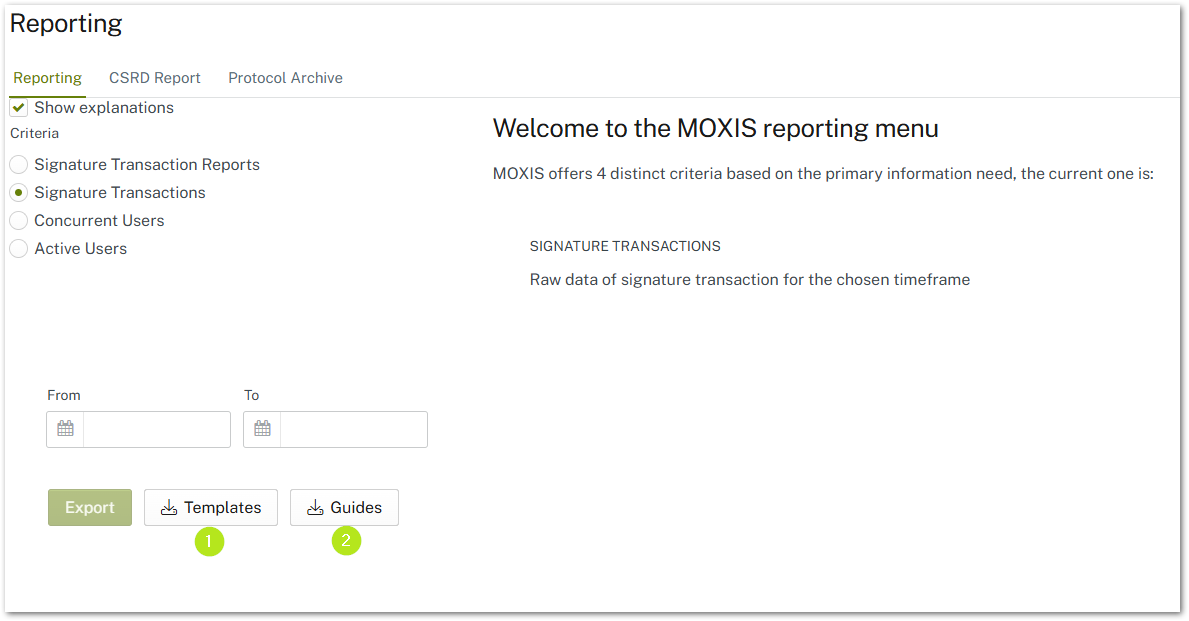
Figure 3: Signature Transactions - Templates and Guides
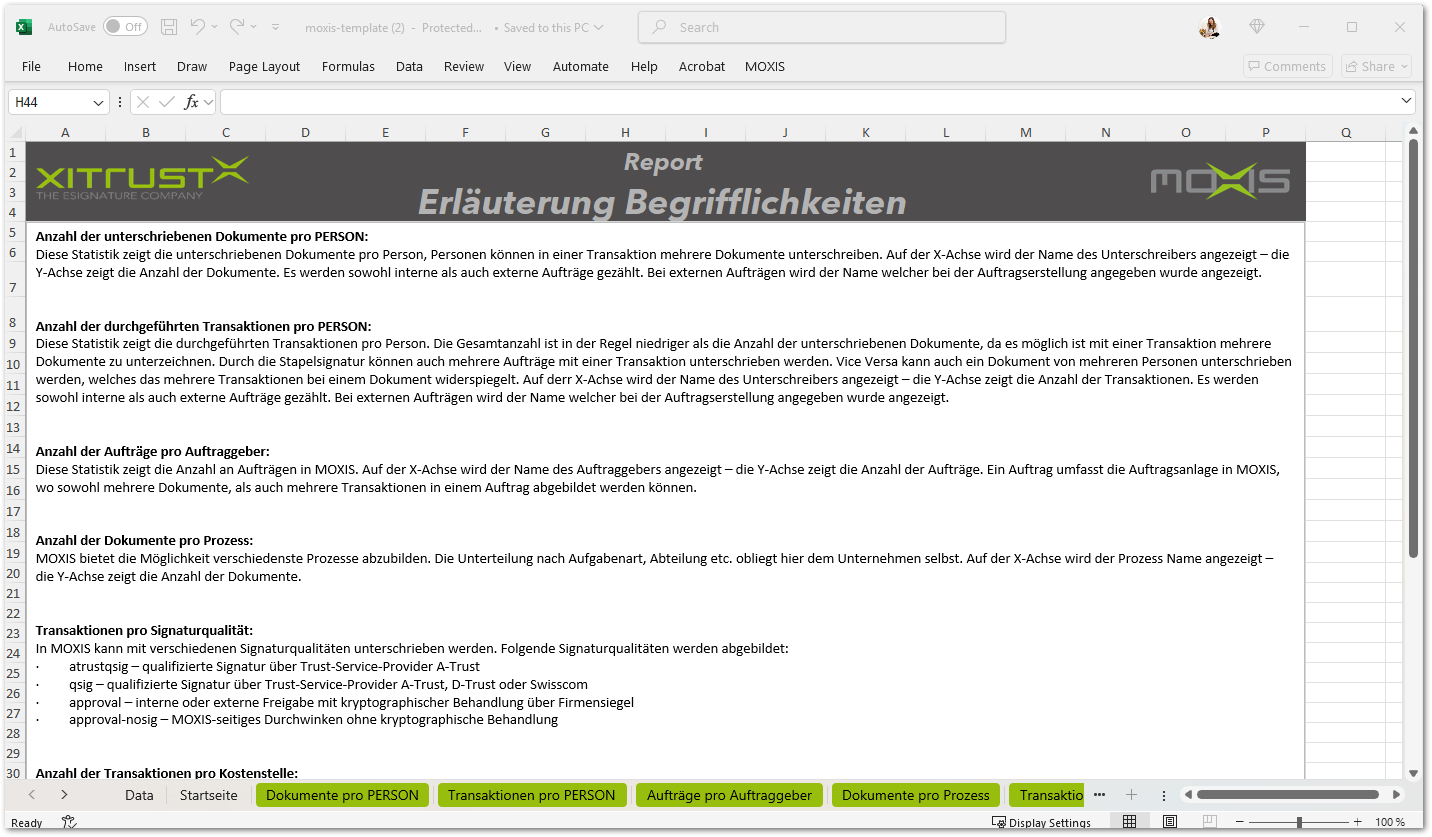
Figure 4: Template for reports in MOXIS
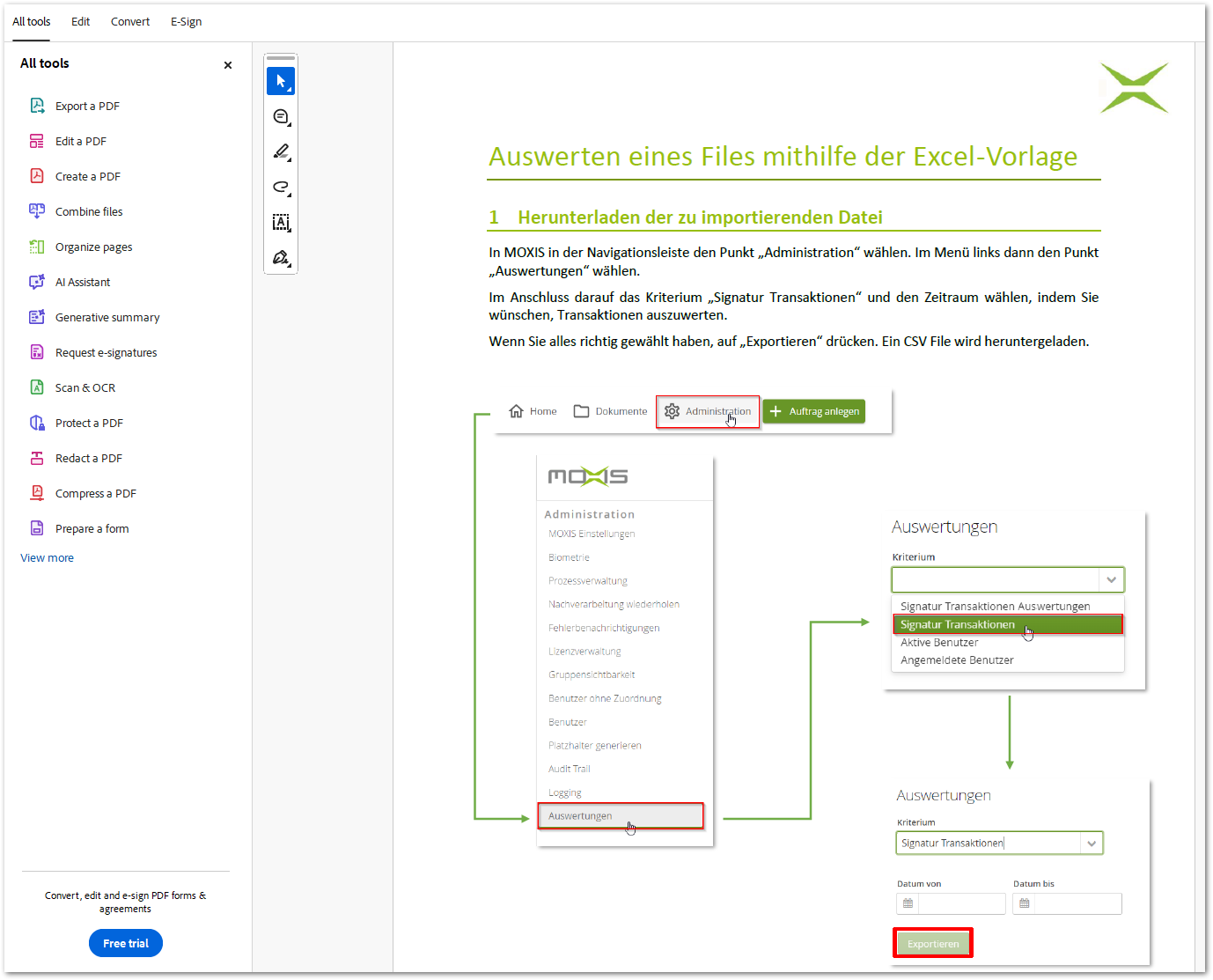
Figure 5: Guide for reports
1.3. Evaluation for concurrent users
You can control the Concurrent User Report (see figure 6) by selecting concurrent users (see figure 6[1]) and entering a date (see figure 6 [2]).
By clicking on the [Query]-button (see figure 6 [3]), the data is displayed in MOXIS (see figure 6 [4]).
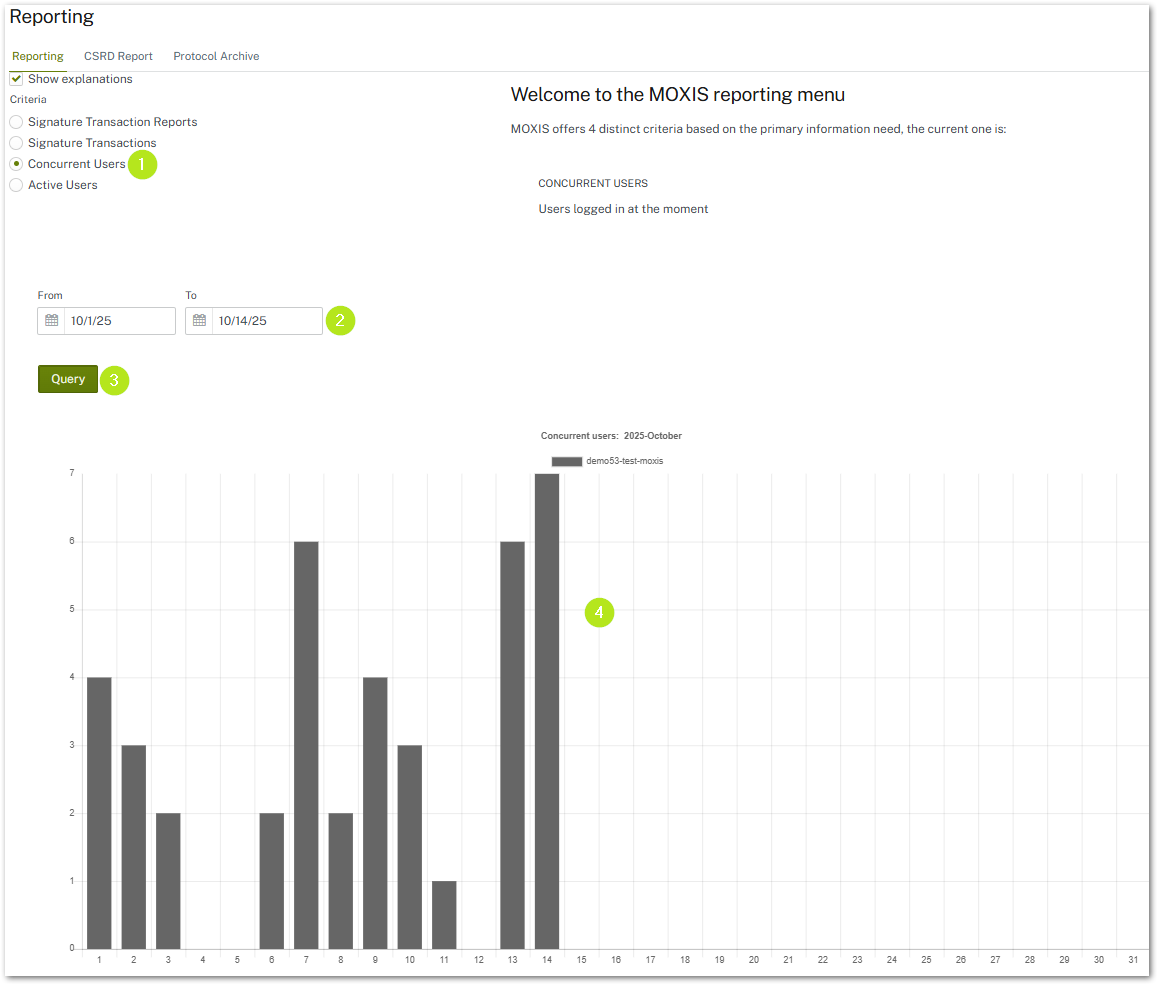
Figure 6: Concurrent users report in MOXIS
1.4. Evaluation for active users
The report for active users (see figure 7) can be downloaded when you select the option Active Users (see figure 7 [1]), set a target date (see figure 7 [2]), and click the [Export]-button (see figure 7 [4]). You can group the users by cost centre and show active users if you check the corresponding boxes (see figure 7 [3]) before the export.
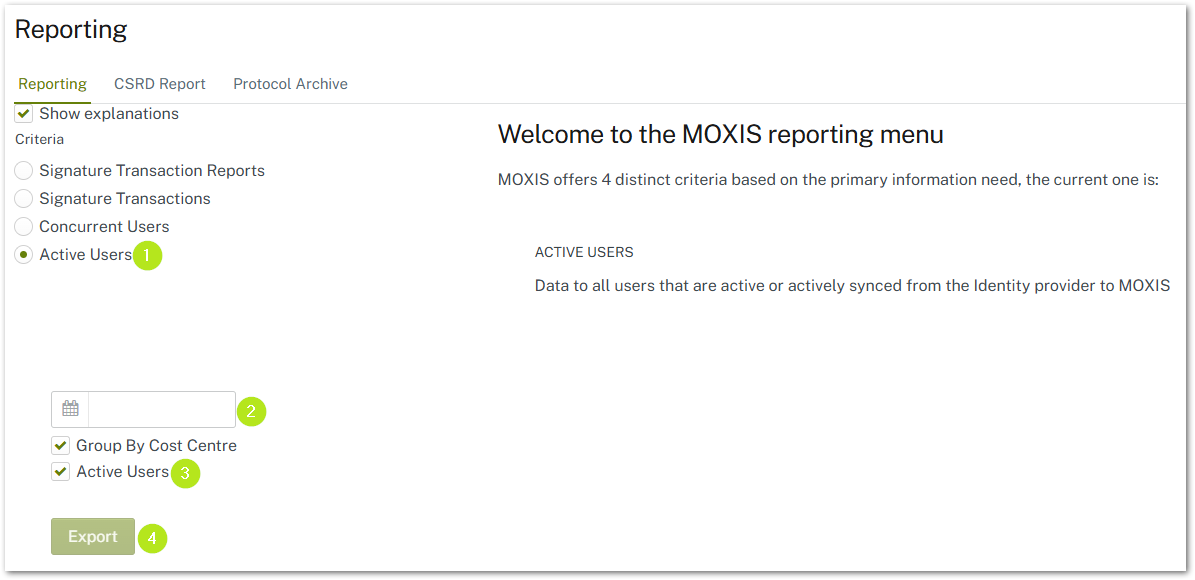
Figure 7: Generate an Active users report in MOXIS
